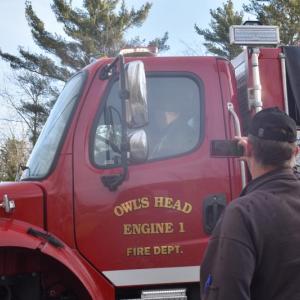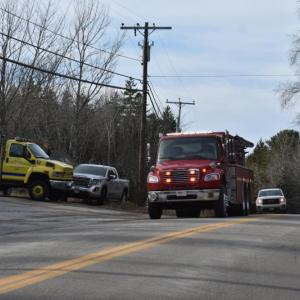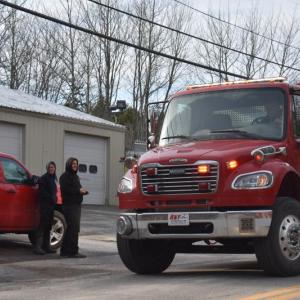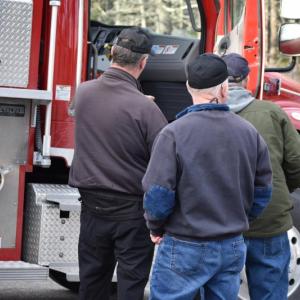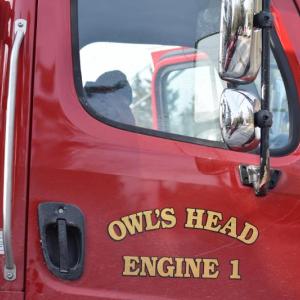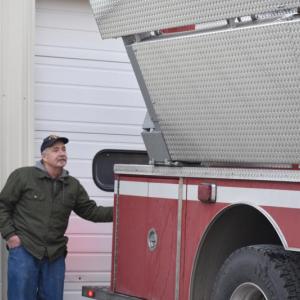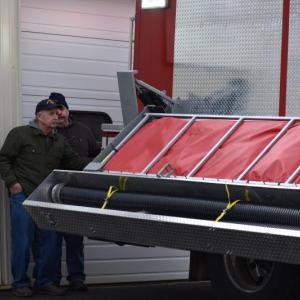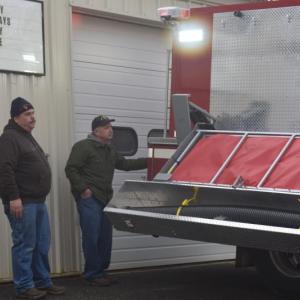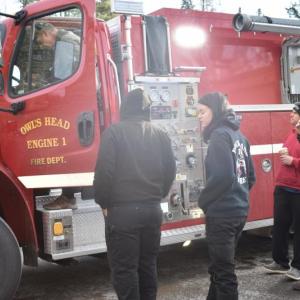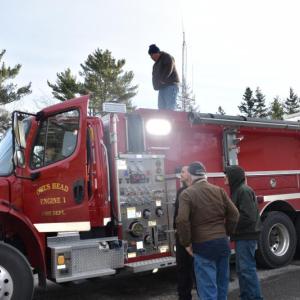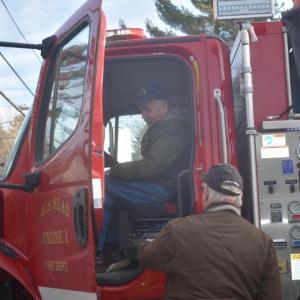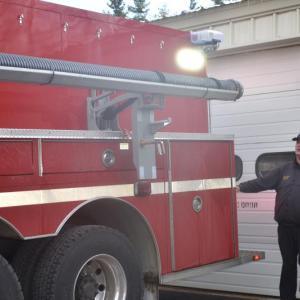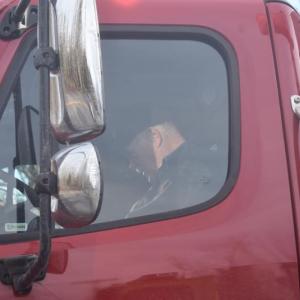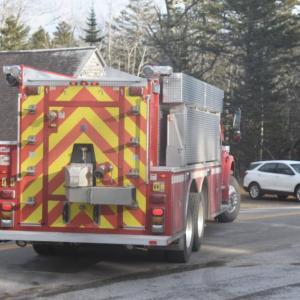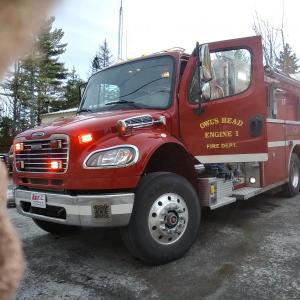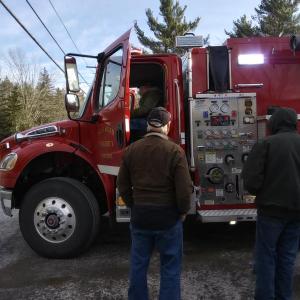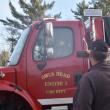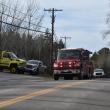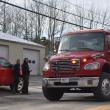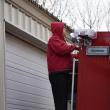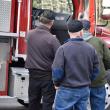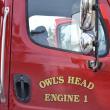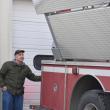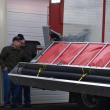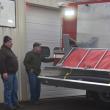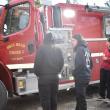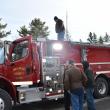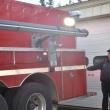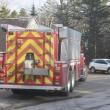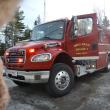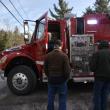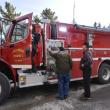Owls Head Fire Department welcomes new Engine 1
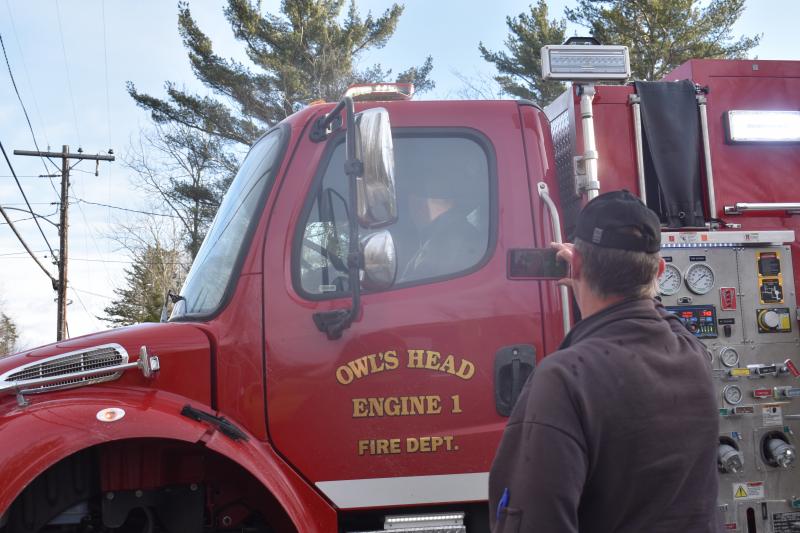 Donald Pierce, Deputy Fire Chief, is the first OHFD officer to take Engine 1 for a spin. Pierce was involved in the 2019 incident that caused the new truck to be commissioned. In the foreground, John Gamage, Assistant Fire Chief, marks the occasion. (Photo by Sarah Thompson)
Donald Pierce, Deputy Fire Chief, is the first OHFD officer to take Engine 1 for a spin. Pierce was involved in the 2019 incident that caused the new truck to be commissioned. In the foreground, John Gamage, Assistant Fire Chief, marks the occasion. (Photo by Sarah Thompson)
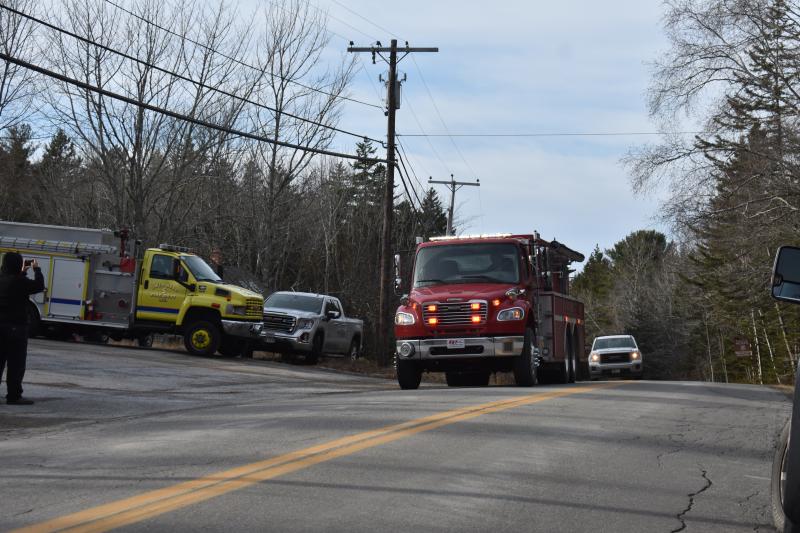 Coming into Owls Head for the first time. (Photo by Sarah Thompson)
Coming into Owls Head for the first time. (Photo by Sarah Thompson)
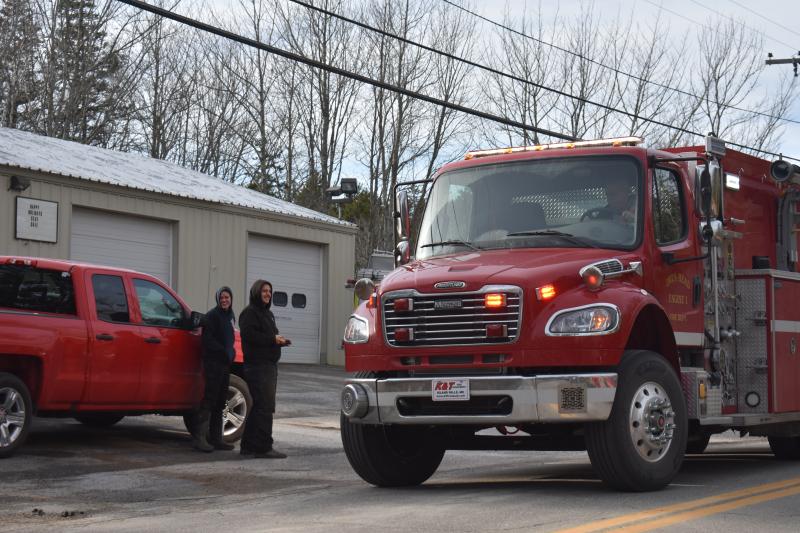 (Photo by Sarah Thompson)
(Photo by Sarah Thompson)
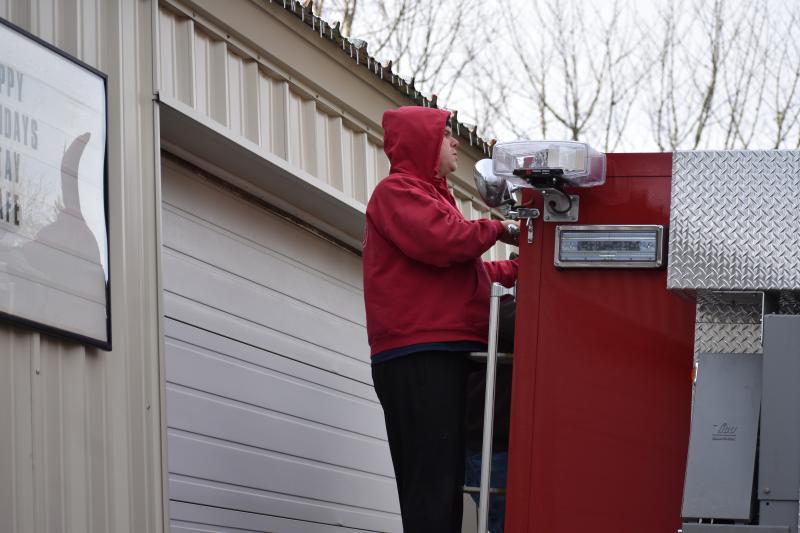 Testing the rungs. (Photo by Sarah Thompson)
Testing the rungs. (Photo by Sarah Thompson)
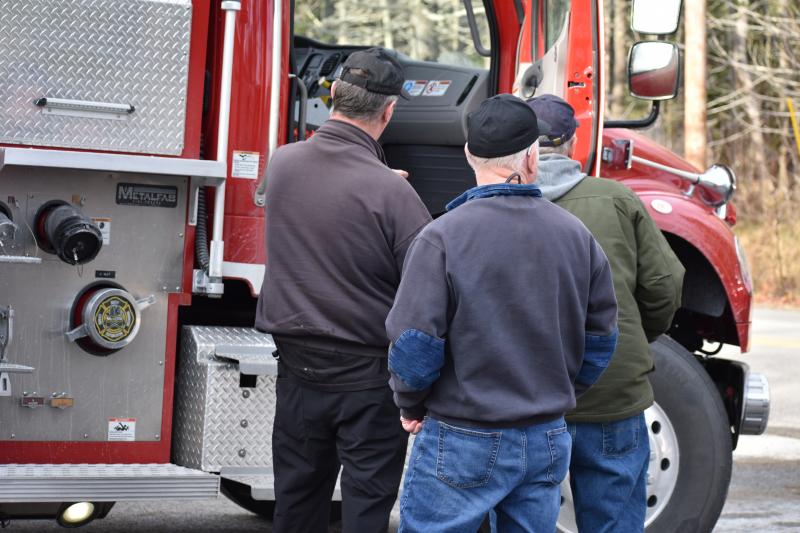 Checking the seats. (Photo by Sarah Thompson)
Checking the seats. (Photo by Sarah Thompson)
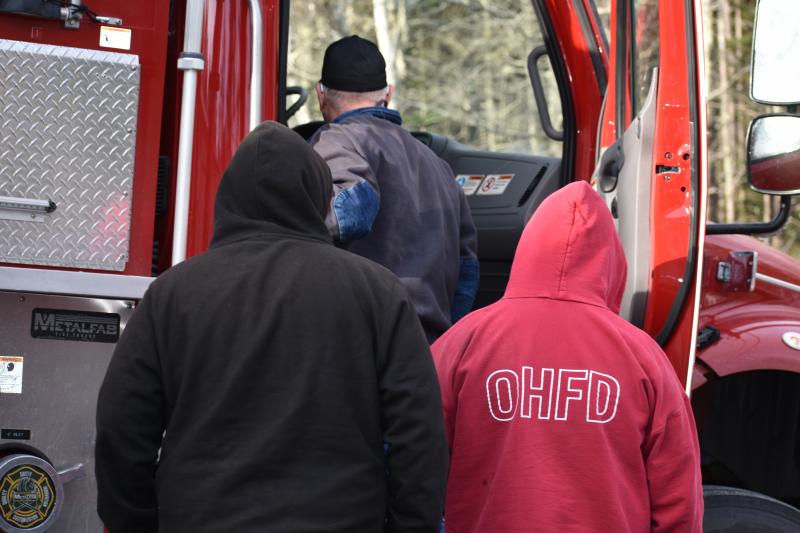 (Photo by Sarah Thompson)
(Photo by Sarah Thompson)
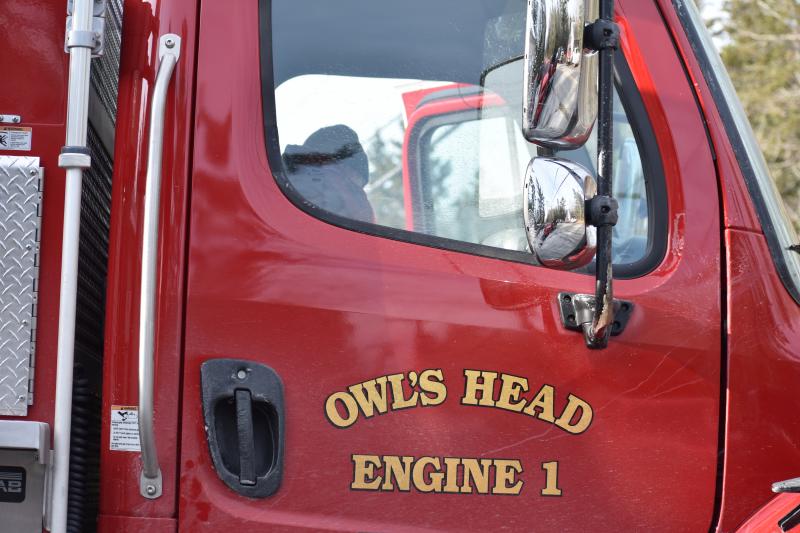 (Photo by Sarah Thompson)
(Photo by Sarah Thompson)
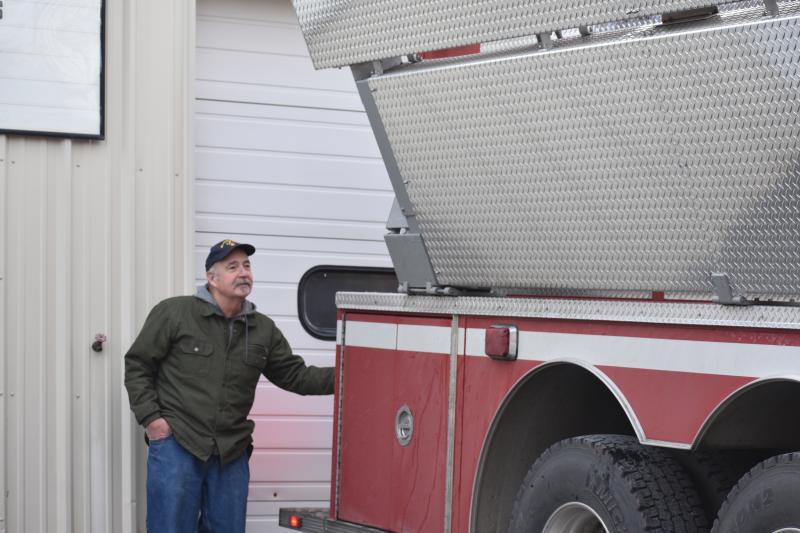 Lowering the “dunk tank.” (Photo by Sarah Thompson)
Lowering the “dunk tank.” (Photo by Sarah Thompson)
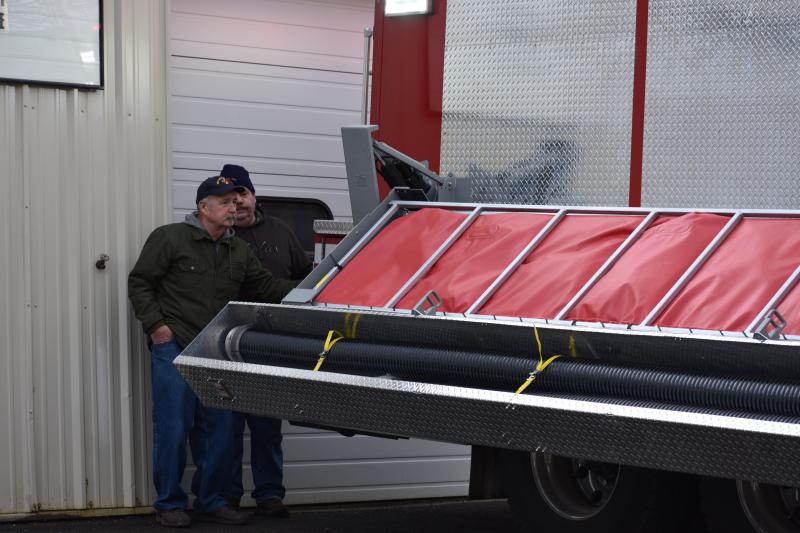 (Photo by Sarah Thompson)
(Photo by Sarah Thompson)
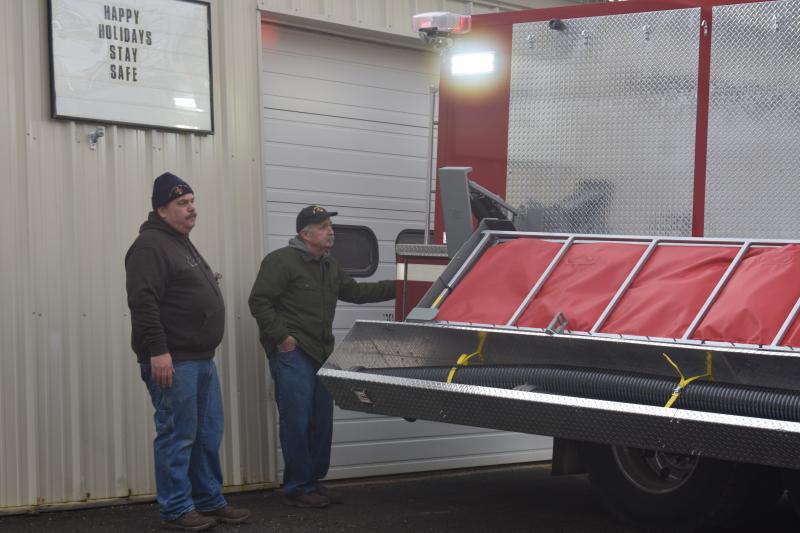 (Photo by Sarah Thompson)
(Photo by Sarah Thompson)
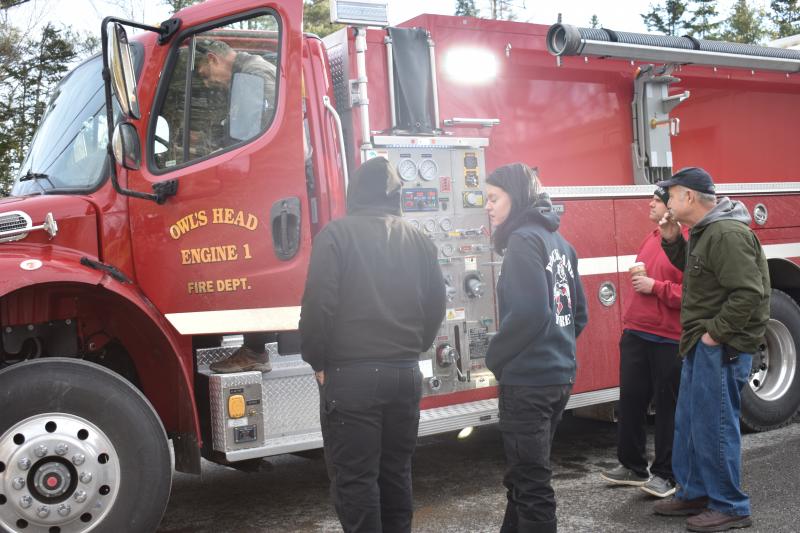 (Photo by Sarah Thompson)
(Photo by Sarah Thompson)
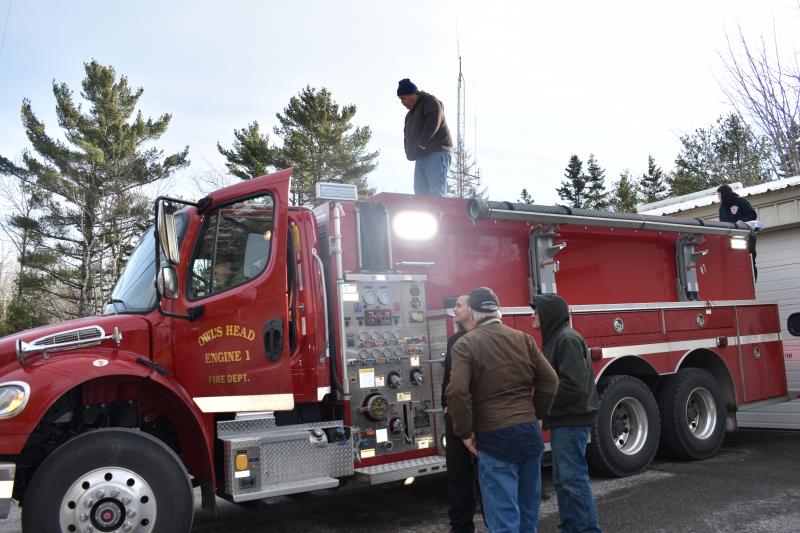 (Photo by Sarah Thompson)
(Photo by Sarah Thompson)
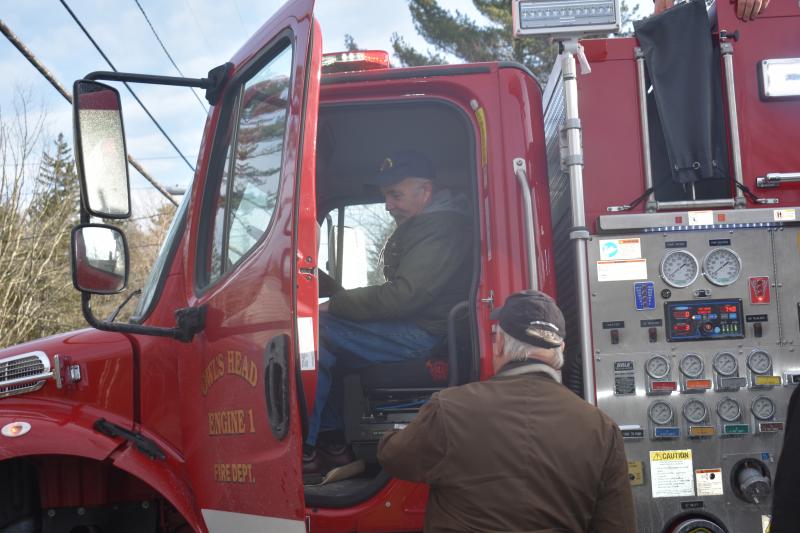 OHFD Chief Frank Ross assesses the driver’s seat. (Photo by Sarah Thompson)
OHFD Chief Frank Ross assesses the driver’s seat. (Photo by Sarah Thompson)
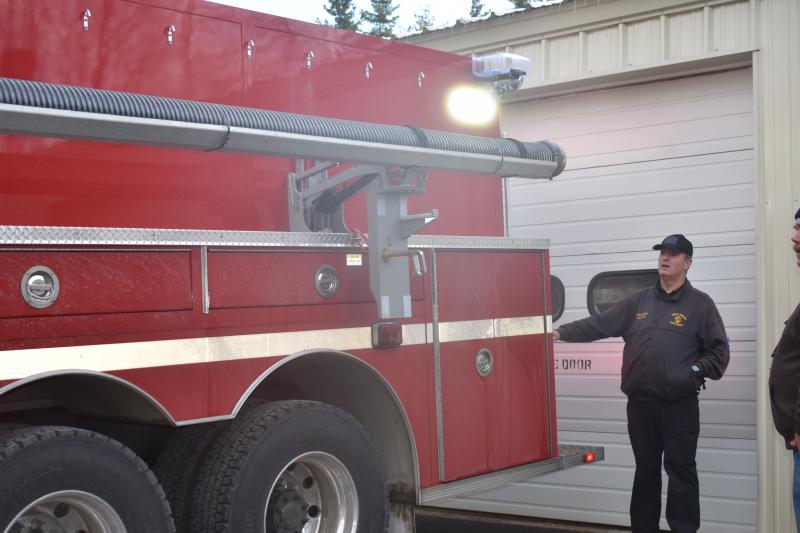 John Gamage lowers the ladder rack. (Photo by Sarah Thompson)
John Gamage lowers the ladder rack. (Photo by Sarah Thompson)
 Donald Pierce buckles up and finds his footing. (Photo by Sarah Thompson)
Donald Pierce buckles up and finds his footing. (Photo by Sarah Thompson)
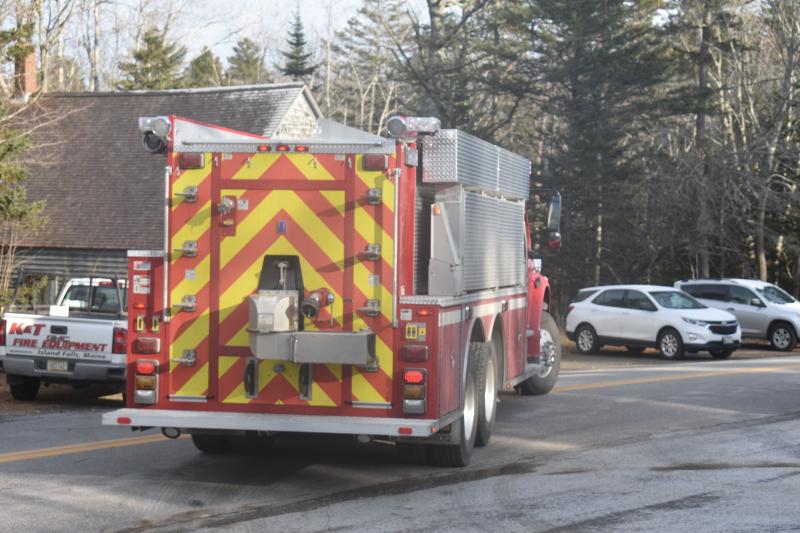 And away he goes. (Photo by Sarah Thompson)
And away he goes. (Photo by Sarah Thompson)
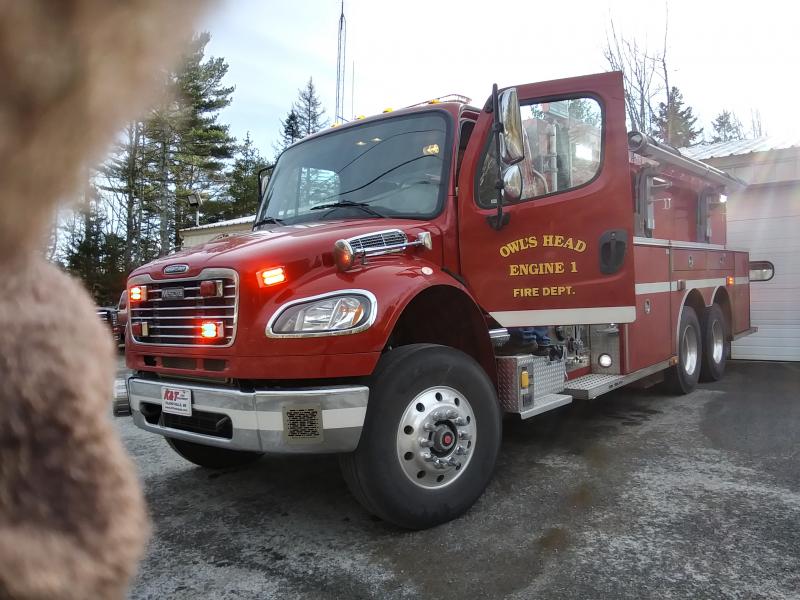 (Photo by Sarah Thompson)
(Photo by Sarah Thompson)
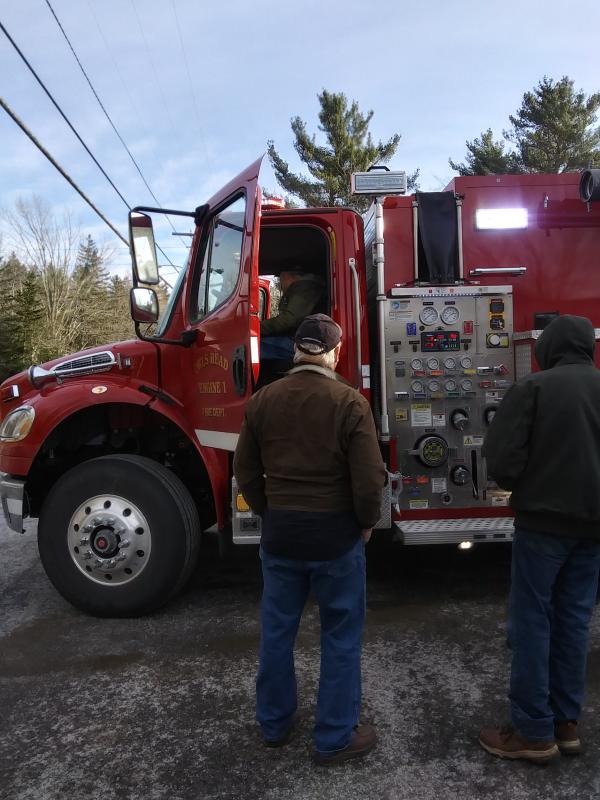 (Photo by Sarah Thompson)
(Photo by Sarah Thompson)
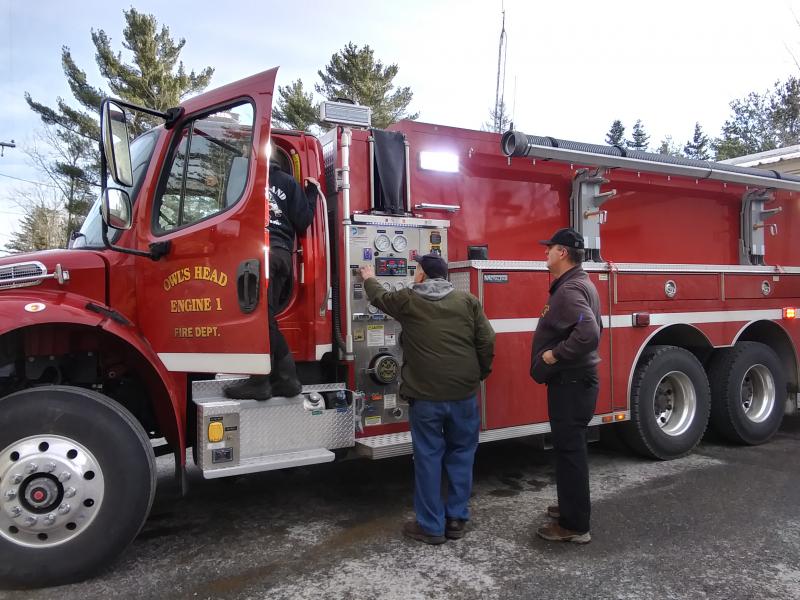 (Photo by Sarah Thompson)
(Photo by Sarah Thompson)
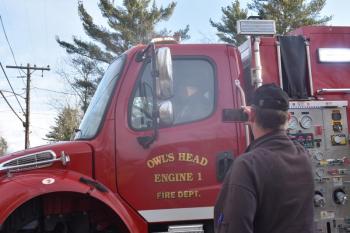 Donald Pierce, Deputy Fire Chief, is the first OHFD officer to take Engine 1 for a spin. Pierce was involved in the 2019 incident that caused the new truck to be commissioned. In the foreground, John Gamage, Assistant Fire Chief, marks the occasion. (Photo by Sarah Thompson)
Donald Pierce, Deputy Fire Chief, is the first OHFD officer to take Engine 1 for a spin. Pierce was involved in the 2019 incident that caused the new truck to be commissioned. In the foreground, John Gamage, Assistant Fire Chief, marks the occasion. (Photo by Sarah Thompson)
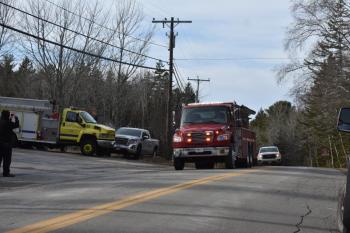 Coming into Owls Head for the first time. (Photo by Sarah Thompson)
Coming into Owls Head for the first time. (Photo by Sarah Thompson)
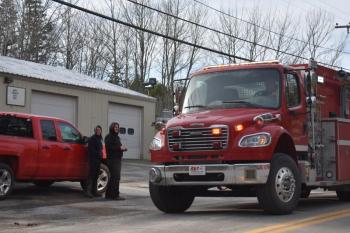 (Photo by Sarah Thompson)
(Photo by Sarah Thompson)
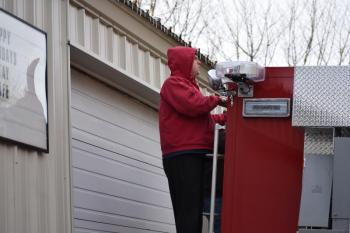 Testing the rungs. (Photo by Sarah Thompson)
Testing the rungs. (Photo by Sarah Thompson)
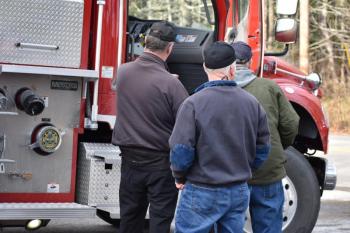 Checking the seats. (Photo by Sarah Thompson)
Checking the seats. (Photo by Sarah Thompson)
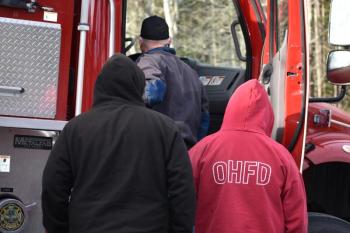 (Photo by Sarah Thompson)
(Photo by Sarah Thompson)
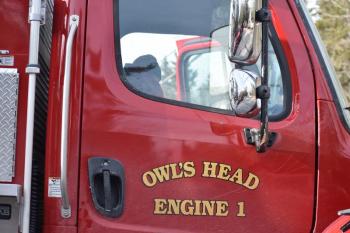 (Photo by Sarah Thompson)
(Photo by Sarah Thompson)
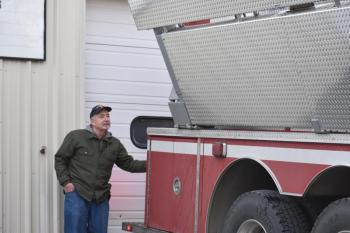 Lowering the “dunk tank.” (Photo by Sarah Thompson)
Lowering the “dunk tank.” (Photo by Sarah Thompson)
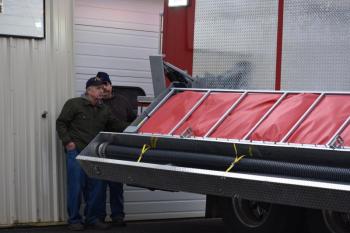 (Photo by Sarah Thompson)
(Photo by Sarah Thompson)
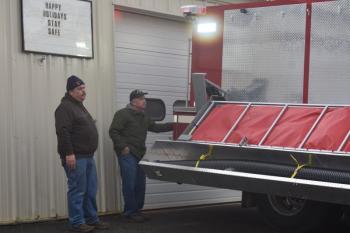 (Photo by Sarah Thompson)
(Photo by Sarah Thompson)
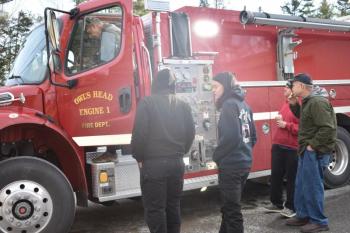 (Photo by Sarah Thompson)
(Photo by Sarah Thompson)
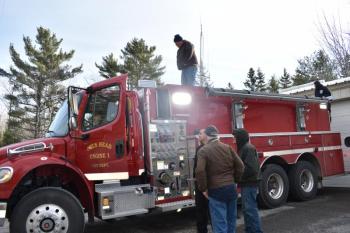 (Photo by Sarah Thompson)
(Photo by Sarah Thompson)
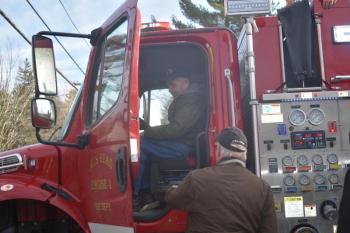 OHFD Chief Frank Ross assesses the driver’s seat. (Photo by Sarah Thompson)
OHFD Chief Frank Ross assesses the driver’s seat. (Photo by Sarah Thompson)
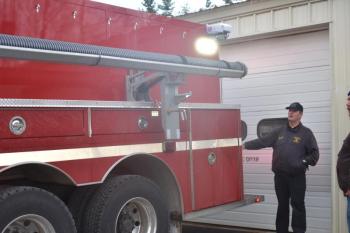 John Gamage lowers the ladder rack. (Photo by Sarah Thompson)
John Gamage lowers the ladder rack. (Photo by Sarah Thompson)
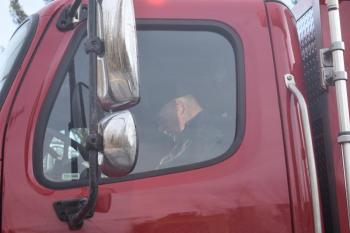 Donald Pierce buckles up and finds his footing. (Photo by Sarah Thompson)
Donald Pierce buckles up and finds his footing. (Photo by Sarah Thompson)
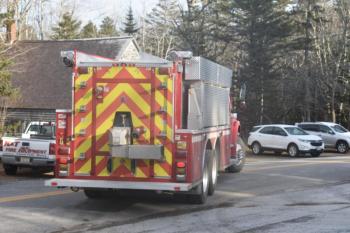 And away he goes. (Photo by Sarah Thompson)
And away he goes. (Photo by Sarah Thompson)
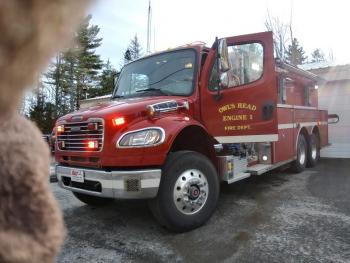 (Photo by Sarah Thompson)
(Photo by Sarah Thompson)
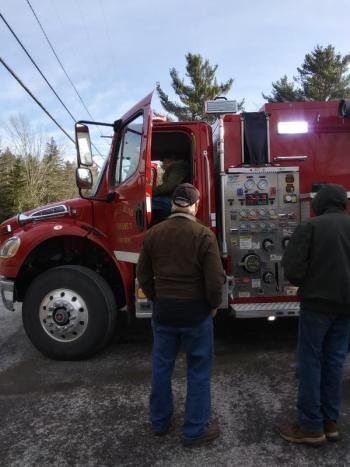 (Photo by Sarah Thompson)
(Photo by Sarah Thompson)
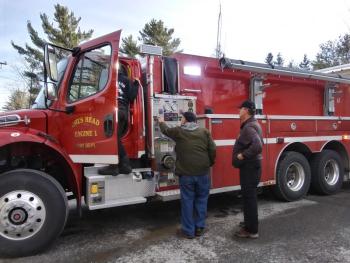 (Photo by Sarah Thompson)
(Photo by Sarah Thompson)
OWLS HEAD — With a top speed of 60 miles per hour, Owls Head Fire Department’s newest engine didn’t make the best time when it arrived to its new berth on North Shore Drive, Nov. 27, 2021. Yet, after waiting more than a year for the engine, which included two months stalled at the U.S. border starting in September 2021, Owls Head firefighters easily disregarded the extra hour added to what’s normally a two hour drive from the U.S. dealer’s Island Falls, Maine, location.
The firefighters’ cellphones were at the ready, in camera mode, as their new Owls Head Engine 1 became visible over the crest of the hill; a far different sentiment from the final time its predecessor was photographed. In October 2019, the previous Engine 1 was involved in a rollover while part of a relay of tankers rushing water to a house fire. The small department that operates with four ground vehicles and a boat instantly shouldered a weight, knowing the burden of being shorthanded. The engine was rendered beyond repair, and new fire trucks aren’t pre-fabricated and sold at the average car dealership.
Thus, the requisition was entered, allowing Chief Frank Ross and OHFD to inform the Centerville, New Brunswick, manufacturer of what fire truck traits are important to a small, rural community that endures salty coastlines, hurricane winds, snowy hills, and a limited crew.
Requested or not, some of the new engine pumper tanker’s features include a 3,000-gallon tank and a foam reservoir.
It has automated side rails: On one side, with the push of a button, a flat shelf holding folded water pools can be powered open.
“The other one we had, we had to get down manually,” said Ross. “And for two or three guys, it’s pretty heavy. This is way easier.”
On the other, a rack can move up and down, allowing personnel to reach their ladders without climbing to the roof and maneuvering hand-offs.
Along with those features, this truck is made with air ride, supposedly allowing for a more comfortable ride, according to OHFD Chief Frank Ross. The truck can lower when being driven into the station.
“In case it doesn’t fit,” said Ross.
The cost? Nothing. Normally a $300,000 machine, the insurance from the former engine allowed for a complete replacement.
Previously, accepted practice in the world of firefighting was to replace a truck within the fleet every seven years. The new practice extends that duration to every ten years. OHFD’s other trucks have already been replaced. The time was soon to come for the 30-year-old Engine 1 – except, OHFD wasn’t finished with it. Instead of replacing it altogether, thoughts had been floated about keeping it on, replacing the transmission.
“It was such a good truck, everybody loved it,” said Ross.
With modern features added to the sturdy truck of yore, the new Engine 1 should fit right in — now that it’s here.
Reach Sarah Thompson at news@penbaypilot.com

